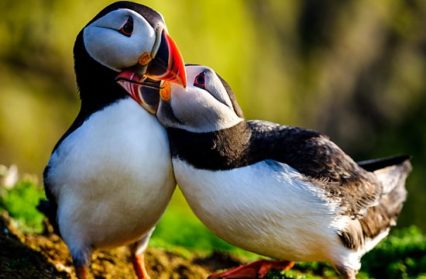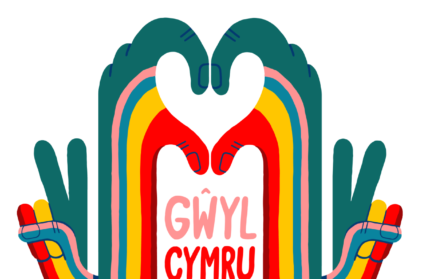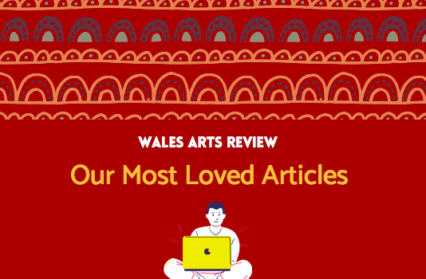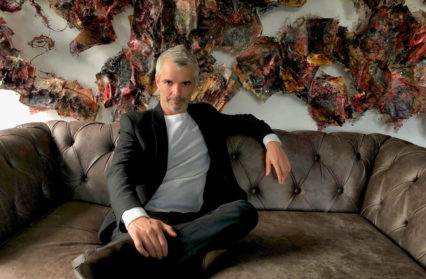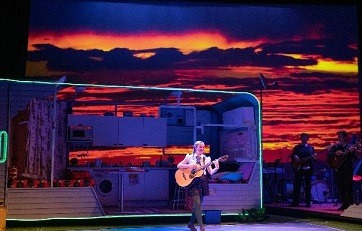Tony Curtis reviews A Wild Year, a new BBC documentary series narrated by Toby Jones in which the first episode takes an inside look at Pembrokeshire.
In her write-up of the first season of A Wild Year, which focused on the Lake District, in the Guardian, Lucy Mangan said:
‘Unless it’s a taster for a twelve-part series to come, I’m not sure what the point of The Lake District: A Wild Year was. It showed a year of Cumbrian life, condensed via the magic of heavy editing and time lapse photography, into an hour, to no apparent purpose.’
This Pembrokeshire film is very much the same. This time the narrator is Toby Jones, a fine actor, wasted on what is a pretty flat reading of an uninspired script. Jones, as English as they come, has the right name, but is lacking in heart. The clichés in the script are matched by the same time-lapse device, which remains as irritating now as it was in the first of the series. Sped up footage of visitors to Skomer Island really does give the wrong impression of what is actually a very special experience.
It works for the planting of the Pembrokeshire new potatoes; as used in the season’s second episode ‘The Fens’, a drone shot for the harvesting of pumpkins is here repeated as the patterns of the tractor’s work echo the sand-rake art of Jon Foreman. But, as with so many current TV films, the obsession with drones can be wearing. Foreman is a very contemporary artist, but no mention is made of the significant context of an artistic tradition that draws people to the county; the work of Grahame Sutherland and John Piper are seminal to British art of the Twentieth century and Pembrokeshire could have an equal claim to that of St Ives and Cornwall. Now the painter Brendan Stuart Burns shows paintings inspired by the beaches at Broad Haven and Caerfai Bay in London and internationally; the potter Adam Buick uses clay and minerals sourced from the north Pembrokeshire coast in his vessels. The county continues to inspire. A Wild Year has geometric sand-rake patterning and no other reference to those artists who thrive in the county.
The purpose of this series is problematic: what are these one hour films for? They are not strictly speaking nature programmes, not do they introduce in any meaningful way the inhabitants of the regions. No-one is interviewed or makes a contribution to the narration. There is no attempt to locate the region for the viewer who has not visited the county or knows anything about it. I am always surprised and annoyed by the fact that so many of my fellow Welsh citizens have no knowledge of the shape and perspective of our small country: ask the vox pop person in the John Lewis mall in Cardiff to locate, say, Bala or Llandeilo or Builth Wells on the map. How many people know that there are two Newports?
Not that A Wild Year gets as far north as Newport, Pembrokeshire. Or if the porpoises it shows are really located by a boat trip from that harbour, then we are not told. We have Skomer and Ramsey and Grassholm, Tenby, St David’s, the Saundersfoot New Year’s Day Swim and Solva, where the film and the year it covers begins and ends. But there is no locating map and no sense of where these places and communities are in relation to one another. Church Rock against the sky and the coast is returned to several times, but it is not named nor we are told that it is the focal point of Broad Haven, Broad Haven South, that is (there are two Broad Havens in Pembrokeshire). Church Rock and its beach are reached by walking around that remarkable creation by the rich Cawdor family, in the eighteenth century Bosherston lily pools; the camera wafts us over the lilies but does not relate them to the rock and the beach.
Solva is shown to good advantage and the shell-fish café and Jono Voyce’s boat and nets are heavily featured; as are the Tenby boatmen with the dramatic seasonal lifting, painting and re-launching of their boats. Caldey Island is shown in the distance, but there is no mention of the core trade of ferrying visitors out to that remarkable place, not its importance to the spiritual and artistic life of the county – David Jones, Eric Gill and successive orders of monks. On that half an hour boat trip one crosses the formerly rich oyster beds which, together with the extensive rabbit warrens to the west of the town, provided food and trade before God’s Wonderful Railway reached Tenby in 1860s, before the hotels on the Esplanade were built and modern tourism began. The oyster beds were stripped and loaded onto those trains for the London hotels.
Not only are there no trains in A Wild Year, but there is no mention of the limestone quarrying or the coal mining which shaped the county. I now know that for a decade in the 1860s, one of my Barrah family leased and ran a small mine just two miles inland from Solva; the South Wales seam runs all the way from the mining ports of Saundersfoot and Tenby diagonally across Pembrokeshire, before disappearing under the sea again. Coal and limestone do not surface at all in this film, which does not mention the shaping of the county by mining and quarrying, nor the twentieth century’s establishment of Milford Haven as one of the most important oil and liquid gas ports. All these industries, these human interventions, are particularly pertinent to Pembrokeshire’s wild life, its flora, fauna and its shaping as a National Park.
Pembroke Dock was developed in the nineteenth century only because Nelson admired it and saw its potential as a deepwater naval base. It is now, with Fishguard to the north, one of the main ferry crossings to Ireland. There are still broad stretches of the coast which are owned and have access restricted by the M.O.D. There are both negative and positive impacts on the wild life of Pembrokeshire by these military and industrial presences, none more profound than the Sea Empress tanker’s oil spill in 1996 which threatened to destroy much of the coast’s wild life.
Skomer, Grassholm and Ramsey are eminently photogenic: the couple who live on and take care of the latter are shown herding their flock of sheep on to a small boat for the seasonal switch to the mainland. That is memorable filming, and a good use of the drone. There is fascinating underwater footage of Skomer’s puffins feeding, and the annual shedding of shells by thousands of spider crabs, as one would expect from a production originated by the Bristol Natural History unit. The breeding by grey seals is also well filmed.
But while much is made of the endlessly absorbing puffins, there is no mention of their constant Skomer neighbours the Manx Shearwaters, for whom the island and that of Skokholm are internationally significant breeding grounds following their trans-Atlantic migration.
The bookending of the film, by reference to Solva and its fishing, are contrasted to the river fishing on the Cleddau, though the river is never named, nor is the fact that the Cleddau is of course Dau Cleddau. There are two branches of this “nearby tidal estuary”. On the western river we are shown the compass fisherman Alan Lewis, but that unique method of fishing is not named and is not located at Llangwm; the origins and precarious nature of this tradition are barely touched on. There are too many missed connections and narratives here.
A Wild Year: Pembrokeshire is not a wasted exercise if it introduces a wider audience to one of the most beautiful and intriguing counties in the UK and encourages them to explore further. What it fails to do is to offer any depth of understanding or a critique of the issues facing Wales’s oldest national park. There is no guidance for that journey of engagement and discovery, which one would hope that visitors undertake.
Tony Curtis has had a home in Pembrokeshire for many years. He has previously edited The Poems of Pembrokeshire and is the author of Real South Pembrokeshire from the Seren series.


